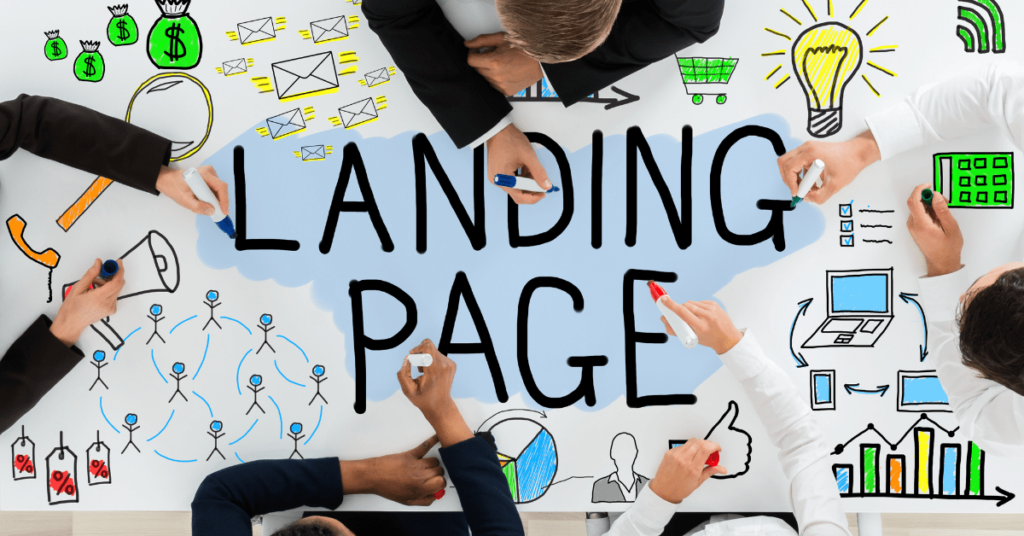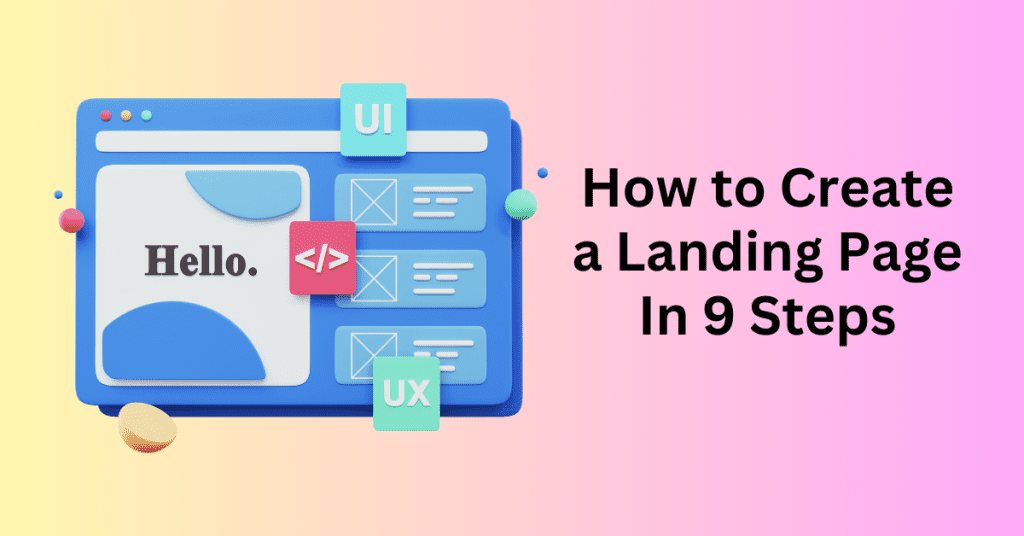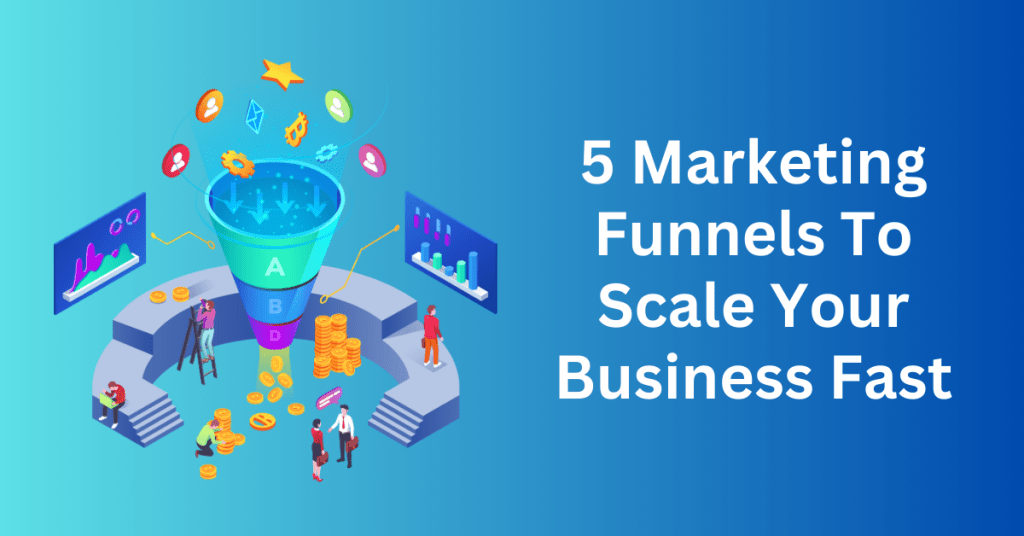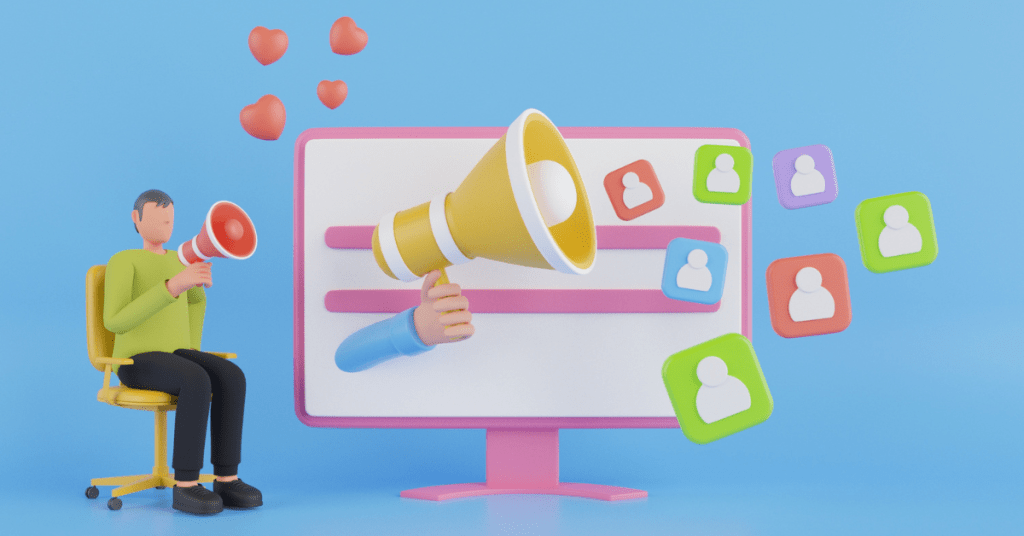By definition, a marketing funnel is a strategy or framework designed to turn cold audiences into long-term customers by funnelling them through 4 different stages – awareness, interest, desire, and action (AIDA).
The name funnel comes from the shape of a funnel where you begin with a large audience that you filter out when they go through the funnel. In the end, those left will be your ultimate target customers who had already been trained about your brand and product. And is most likely to make a recurring purchase at the end.
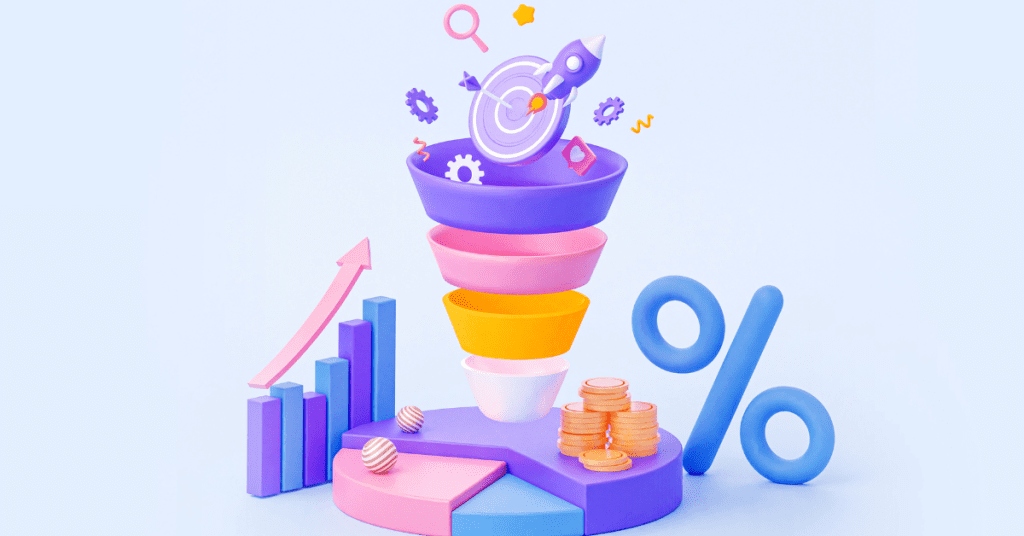
The ultimate goal for a marketing funnel isn’t just to convert someone or to make a single purchase. Instead, it’s bigger than that: the goal is to create a group of fans or loyal customers that will be buying all your products. Recurring customers and subscriptions are the 2 most important aspects you need to implement in your business as soon as possible. By having this, you can build multiple sources of high-value prospects and increase customer lifetime value.
In marketing funnels, audiences are usually divided into three groups:
- Top of the funnel (ToFu). This is everyone in your target audience that you direct to your landing page. In this stage, you can filter by either offering a free lead magnet offer or low ticket sales to quality them.
- Middle of the funnel (MoFu). These are your potential customers, that have shown an interest in what you’re offering. In this stage, you can offer your first upsell that is a complementary product to what you provided in the first stage.
- Bottom of the funnel (BoFu). These are your new and existing customers, people who have taken out their credit cards and bought from you. This is the group that you focus on when you have a new offer.
The key to an effective marketing funnel is this: Engage with and provide increasing value to your prospects throughout each stage. Another way marketing funnels have been structured is around emotions and actions.
Awareness, Interest, Desire & Action (AIDA)
Elias St. Elmo Lewis developed this model in the late 19th century. It’s since become the backbone of almost every successful marketing campaign and funnel in the business.
AIDA gives you a blueprint to take potential customers through an emotional journey of making a purchase.
If a marketing funnel was a human body, the Top, Middle and Bottom would be the brain … and AIDA would be the heart. Let’s see how we can put them together.
Top of the Marketing Funnel: Awareness Stage
This is the first stage of the marketing funnel. It is where you hook your new audience through the marketing campaign. It can be content marketing, SEO, or paid traffic. In this stage, you want to qualify your customers. For instance, some may offer a $1 product in this stage, just to differentiate customers that are willing to make a purchase from those that don\’t.
In this stage, you need to know efficiently
- Where my audience congregates? Are they active on Facebook, Instagram, Twitter, or Linkedin? Each platform will have a different marketing strategy.
- What kinds of content do they interact with the most? Blog, picture, tutorial videos, reviews?
- What free or lower-cost offers can I use to filter them? The report, cheatsheet, ebook, tutorial video, and free course.
Again, at this stage, you want to qualify who within your target audience is ready to buy. Needless to say, if you can’t get prospects interested in your entry-level offers, there’s no way you’ll be able to get them to buy your big-ticket items or services. This is very important as you don’t want to waste your money targeting people who will never make any purchases.
Middle of the Marketing Funnel: Interest & Desire
Once a prospect takes the bait on your ad or post, they’re qualified. Hence, moving down your funnel to the Interest and Desire stage.
In this stage, you begin to build a relationship. You need to let them know that you care about them. Not just to make money from them. You understand their problems, have a good solution for them, and are willing to help. To build trust, you need to build your credibility and show small results that they can see instantly.
Desire follows when they’re interested and considered to make a purchase. Here’s how you can introduce your frontend offer through …
Squeeze Pages & Landing Pages
On your squeeze page, the most important is your headline. A good headline that can attract attention and bait your audience can increase your conversion rate. Next will be the copy, you need to let them know clearly what you’re offering and what to expect from your offer.
Call-to-action needs to be crystal clear on what your audience needs to do. After they heard about your offer, how they want to get it. What they need to do. You can also add some countdown timer or limited quantities so it gives them a sense of urgency for them to take action now or they will lose the offer.
Bottom of the Marketing Funnel: Action
Action, the final stage of the marketing funnel has prospects deciding to purchase (or not purchase) the product or service. You’ll need to reinforce the value of your offer, as well as the downsides of not making a purchase. For instance, you can have a list of all the offers and the values you provide together with the purchase so they can refresh it.
If your landing page is done correctly, now they should be interested in the product or service you have for them at this point.
